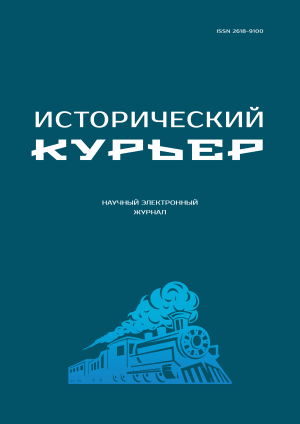The 80th Anniversary of the Great Victory: Results and Prospects of Studying the History of the Great Patriotic War
Over time, the number of works devoted to the Great Patriotic War continues to grow, counting in tens of thousands. The upcoming 80th anniversary of the Victory has traditionally increased public interest in the history of the Great Patriotic War.
However, the public demand determines not only the anniversary date, but the surrounding reality itself. The victory over fascism, which for many years seemed unshakable and final, turned out to be incomplete. In the context of the Special Military Operation, public interest in how Victory was achieved is steadily increasing. This makes practical sense, as the requirements of the military situation lead to the formation of similar state and public institutions, mechanisms and practices for solving problems. The study of historical experience can facilitate and accelerate their implementation.
 Life and Death in the Age of War
Life and Death in the Age of War
V.A. Isupov
Demographic History of Russia during the Great Patriotic War: New Tasks − New Sources
The current stage of development of historical demography in Russia is characterized by significant achievements in the study of population dynamics during the Great Patriotic War. At present, historical demography is one of the rapidly developing sections of the humanities. Positive shifts in the study of just recently little known trends in demographic dynamics during the war are very significant. The development of historiography and the source study aspects of the problem in the article are rather conditionally, but quite logically, divided into three large periods.
Publishing: 28/04/2025
How to cite: Isupov V.A. Demographic History of Russia during the Great Patriotic War: New Tasks − New Sources // Historical Courier, 2025, No. 2 (40), pp. 11–28. [Available online: http://istkurier.ru/data/2025/ISTKURIER-2025-2-01.pdf]
 Life and Death in the Age of War
Life and Death in the Age of War
V.B. Zhiromskaya, N.A. Aralovets
Disabled People during the Great Patriotic War of 1941−1945
Based on archived and published data, the article shows a significant increase in the number of disabled people during the Great Patriotic War in the RSFSR and the USSR as a whole. It shows the attitude towards the disabled of the First World War and the Civil War in the 1920s and 1930s. It is noted that determining the number of disabled people causes historians many difficulties and generates various estimates. The groups of disability, its causes, and forms of state assistance to people with disabilities during the Great Patriotic War are considered. Special attention is paid to the state assistance to children with disabilities.
The article was completed during the work on the project of the multi-volume publication “History of Russia”.
Publishing: 28/04/2025
How to cite: Zhiromskaya V.B., Aralovets N.A. Disabled People during the Great Patriotic War of 1941−1945 // Historical Courier, 2025, No. 2 (40), pp. 11−40. [Available online: http://istkurier.ru/data/2025/ISTKURIER-2025-2-02.pdf]
 Life and Death in the Age of War
Life and Death in the Age of War
N.V. Chernysheva
Peculiarities of Mortality of the Population of the Rear Areas of the RSFSR during the Great Patriotic War
The article considers the peculiarities of mortality of the population of the rear regions of the RSFSR during the Great Patriotic War. The negative trends in population reproduction, which manifested themselves on the eve of the war, were replaced by an even greater increase in mortality in the period from June 1941 to the fall of 1942. Five characteristics of mortality of the rear population of the RSFSR, reflected in structural and non-structural characteristics, are revealed. The materials of the RSFSR and its regions show some of their specifics, reflected in the rear regions of the RSFSR with varying degrees of intensity.
Publishing: 28/04/2025
How to cite: Chernysheva N.V. Peculiarities of Mortality of the Population of the Rear Areas of the RSFSR during the Great Patriotic War // Historical Courier, 2025, No. 2 (40), pp. 41−53. [Available online: http://istkurier.ru/data/2025/ISTKURIER-2025-2-03.pdf]
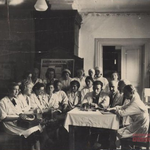 Life and Death in the Age of War
Life and Death in the Age of War
M.A. Semenov
The Impact of the Incidence of Infectious Diseases on the Mortality of the USSR Population during the Great Patriotic War
This article analyzes the influence of the dynamics of the incidence of a number of infectious diseases on the mortality of the civilian population of the USSR during the Great Patriotic War. The article provides summary data on morbidity in the USSR and the RSFSR. The factors influencing the change in morbidity are indicated. Based on the data on morbidity and mortality, the number of deaths from a number of infectious diseases is calculated. It has been established that reducing mortality from infectious diseases is one of the most important components of reducing mortality in the USSR in 1940−1945.
The article is on the topic of the state assignment “Socio-Economic Potential of the Eastern Regions of Russia in the 20th and Early 21st Centuries: Management Strategies and Practices, Dynamics, Geopolitical Context” (FWZM‑2024-0005).
Publishing: 28/04/2025
How to cite: Semenov M.A. The Impact of the Incidence of Infectious Diseases on the Mortality of the USSR Population during the Great Patriotic War // Historical Courier, 2025, No. 2 (40), pp. 54–67. [Available online: http://istkurier.ru/data/2025/ISTKURIER-2025-2-04.pdf]
 Life and Death in the Age of War
Life and Death in the Age of War
S.A. Kuskov
Evacuation Hospitals during the Great Patriotic War: Current Situation and Opportunities for Studying the Topic
The article analyzes the experience of studying evacuation hospitals by historians. The author notes the uniqueness of hospital systems of different historical periods, as well as the growing importance of archival documents as part of the source base of modern research. Difficulties hindering modern researchers are indicated: limited access to hospital documents, lack of explanatory concepts and hypotheses, weak interest of foreign researchers, narrow territorial framework of scientific work, transition of researchers to other related topics. Based on this, conclusions were drawn about the need to transfer military medical documents from the war period 1941−1945 in civilian archives and the prospects for the refusal of researchers from a narrow territorial framework.
Publishing: 28/04/2025
How to cite: Kuskov S.A. Evacuation Hospitals during the Great Patriotic War: Current Situation and Opportunities for Studying the Topic // Historical Courier, 2025, No. 2 (40), pp. 68–77. [Available online: http://istkurier.ru/data/2025/ISTKURIER-2025-2-05.pdf]
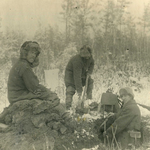 The Country of Labor Valor
The Country of Labor Valor
G.A. Tkacheva
Land Communication Routes in the Strategy for Ensuring Security of the Eastern Borders of the USSR in 1922−1945
Using a new source base, the article presents the main directions of transformation of the road infrastructure of the Far East region in the spatial and communication system of the USSR in 1920−1945. It is revealed that it was transformed using militarized methods of the administrative-command model of interaction between central structures and subordinate organizations and enterprises of the industry.
Publishing: 28/04/2025
How to cite: Tkacheva G.A. Land Communication Routes in the Strategy for Ensuring Security of the Eastern Borders of the USSR in 1922−1945 // Historical Courier, 2025, No. 2 (40), pp. 78–94. [Available online: http://istkurier.ru/data/2025/ISTKURIER-2025-2-06.pdf]
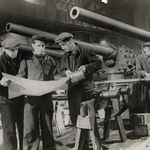 The Country of Labor Valor
The Country of Labor Valor
E.E. Krasnozhenova
Workers of Leningrad Industrial Enterprises (1941−1944)
The article shows conditions of the workforce of Leningrad industrial enterprises under the Leningrad Siege (1941−1944). The number of industrial workers in the city was rapidly decreasing. The need to ensure an uninterrupted production process has led to mass recruitment of new workers to industrial enterprises, with a significant portion of them lacking the necessary qualifications, which had a direct impact on their productivity. Production involved a mass influx of women and teenagers, who had to master male professions. Enterprises employed various forms of advanced training for workers.
The study was supported by the Russian Science Foundation № 25-28-00518 (https://rscf.ru/project/25-28-00518).
Publishing: 28/04/2025
How to cite: Krasnozhenova E.E. Workers of Leningrad Industrial Enterprises (1941−1944) // Historical Courier, 2025, No. 2 (40), pp. 95–104. [Available online: http://istkurier.ru/data/2025/ISTKURIER-2025-2-07.pdf]
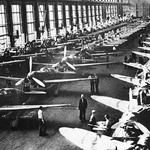 The Country of Labor Valor
The Country of Labor Valor
M.V. Shilovskiy
The Structure of the Defense Potential of Novosibirsk during the Great Patriotic War of 1941−1945
The article analyzes the structure of the defense potential of Novosibirsk during the Great Patriotic War of 1941−1945. It is noted that the deployment of in-line production of defense products in Novosibirsk took place by including in the production process at the sites of plant factories evacuated from the European part of the USSR, as well as by re-profiling local civilian enterprises and cooperation on the production of defense products. Together, these enterprises made up six blocks of the city’s defense potential: fighters, ammunition, radio-technical devices and optics, ferrous and non-ferrous metals, machine tools, material and clothing allowances and medicines. As a result of the work done during the Great Patriotic War, it was possible to establish in Novosibirsk the manufacture of complex and high-tech products that require high qualifications of workers.
The article was carried out within the framework of the state assignment “Siberian Society as a Factor of Territorial Growth and Unity of Russia (Late 16th − Early 20th Centuries)” (FWZM-2024-0007).
Publishing: 28/04/2025
How to cite: Shilovskiy M.V. The Structure of the Defense Potential of Novosibirsk during the Great Patriotic War of 1941−1945 // Historical Courier, 2025, No. 2 (40), pp. 105–117. [Available online: http://istkurier.ru/data/2025/ISTKURIER-2025-2-08.pdf]
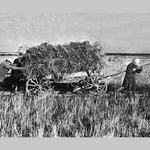 The Country of Labor Valor
The Country of Labor Valor
S.V. Sharapov
Economy of the Collective Farm Yard on the Eve and during the Great Patriotic War (Based on the Materials of Western Siberia)
The article deals with the economic aspects of collective farm yard life on the eve and during the Great Patriotic War. Both the influence of peasant behavior on the economy of collective farms and the dependence of the family on belonging to an artel are studied. The latter opened access to the use of personal subsidiary farms and to integration into interfamily networks of mutual aid that bound relatives and fellow villagers together. In addition, the weak state control over collective farm products and resources made it possible, albeit in violation of the law, to appropriate a part of them.
The article was carried out within the framework of the state assignment “Siberian Society as a Factor of Territorial Growth and Unity of Russia (Late 16th − Early 20th Centuries)” (FWZM-2024-0007).
Publishing: 28/04/2025
How to cite: Sharapov S.V. Economy of the Collective Farm Yard on the Eve and during the Great Patriotic War (Based on the Materials of Western Siberia) // Historical Courier, 2025, No. 2 (40), pp. 118−131. [Available online: http://istkurier.ru/data/2025/ISTKURIER-2025-2-09.pdf]
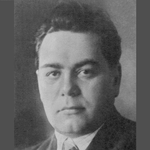 The Country of Labor Valor
The Country of Labor Valor
N.N. Melnikov
Sergey Vasilievich Kaftanov and the Management of Soviet Science during the Great Patriotic War
In the early days of World War II, S.V. Kaftanov became authorized by the GKO to coordinate and strengthen scientific work in the field of chemistry. S.V. Kaftanov did not abandon attempts to extend his influence to all Soviet science. However, the country's top leadership rejected these initiatives in every possible way. As a result of the work of the commissioner during the first year and a half of the military conflict, the topic of scientific research was reoriented to developments related to strengthening the country's defense capability.
Publishing: 28/04/2025
How to cite: Melnikov N.N. Sergey Vasilievich Kaftanov and the Management of Soviet Science during the Great Patriotic War // Historical Courier, 2025, No. 2 (40), pp. 132–140. [Available online: http://istkurier.ru/data/2025/ISTKURIER-2025-2-10.pdf]
 Scorched Childhood
Scorched Childhood
L.Е. Mezil
The Role of School in the Daily Life of a Soviet Child during the Great Patriotic War
The article shows the role of schools in the adaptation of the younger generation to living conditions during the war. The role of the teacher’s personality in the socialization of children during this difficult period is shown, in changing the forms of work with students in the classroom and outside its walls in order to achieve the goals of the school. It was revealed that a significant number of children continued their studies at school, often combining their studies with work on a collective farm or at an industrial enterprise.
Publishing: 28/04/2025
How to cite: Mezit L.E. The Role of School in the Daily Life of a Soviet Child during the Great Patriotic War // Historical Courier, 2025, No. 2 (40), pp. 141–148. [Available online: http://istkurier.ru/data/2025/ISTKURIER-2025-2-11.pdf]
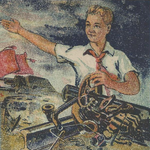 Scorched Childhood
Scorched Childhood
S.A. Vlasov
Little Home Front Workers: Child and Adolescent Labor in the Far East during the Great Patriotic War
The article, based on a wide range of archival materials introduced into scientific circulation for the first time, examines the place and significance of child and adolescent labor in the Far East during the Great Patriotic War. It has been established that the main area of the economy where child and adolescent labor was widely used was agriculture. It is concluded that the work of children and adolescents had no alternative, as the country could not survive in the difficult conditions of wartime without their labor participation, and thath they made their worthy contribution to the victory in the Great Patriotic War.
Publishing: 28/04/2025
How to cite: Vlasov S.A. Little Home Front Workers: Child and Adolescent Labor in the Far East during the Great Patriotic War // Historical Courier, 2025, No. 2 (40), pp. 149–159. [Available online: http://istkurier.ru/data/2025/ISTKURIER-2025-2-12.pdf]
 Scorched Childhood
Scorched Childhood
N.M. Markdorf
Juvenile Delinquency in Kuzbass During the Great Patriotic War
The article provides a description of the state of offenses, including crimes committed by minors and children, during the war and in the first post-war years. The causes of offenses committed by individuals, including those in children’s social, educational institutions (children’s reception and distribution centers, orphanages) and educational institutions (schools of vocational education, vocational and railway schools) are investigated. The article is mainly based on archival sources concentrated in the archives of the Kemerovo and Novosibirsk regions.
The author expresses deep gratitude to the director L.Yu. Sapurina and employees of the State Archive of Kuzbass, employees of the Archive of the Information Center of the Main Directorate of the Ministry of Internal Affairs of Russia for the Kemerovo Region, who assisted in the selection of material.
Publishing: 28/04/2025
How to cite: Markdorf N.M. Juvenile Delinquency in Kuzbass During the Great Patriotic War // Historical Courier, 2025, No. 2 (40), pp. 160−173. [Available online: http://istkurier.ru/data/2025/ISTKURIER-2025-2-13.pdf]
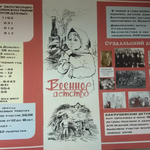 Scorched Childhood
Scorched Childhood
T.G. Nedzelyuk, E.V. Materova
Childhood in Evacuation: Sources for Studying the History of the Daily Life of Children’s Institutions Evacuated to the South of Western Siberia During the Great Patriotic War
The evacuation of children from places of military operations has acquired an urgent meaning in modern history. The historiography presents various, often contradictory, interpretations of the narrative “childhood in evacuation”, which prompts us to once again turn to the topic of sources for studying the history of the daily life of children’s institutions that changed their location during the Great Patriotic War. Children from besieged Leningrad and other occupied regions sought to settle in a warm climatic area (as far as possible in Siberia), and therefore the territorial locus of the study covers the Altai Territory, Novosibirsk, Omsk, Kemerovo regions and the south of Tomsk.
Publishing: 28/04/2025
How to cite: Nedzelyuk T.G., Materova E.V. Childhood in Evacuation: Sources for Studying the History of the Daily Life of Children’s Institutions Evacuated to the South of Western Siberia During the Great Patriotic War // Historical Courier, 2025, No. 2 (40), pp. 174−183. [Available online: http://istkurier.ru/data/2025/ISTKURIER-2025-2-14.pdf]
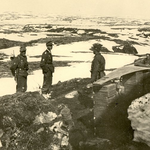 On the Fronts...
On the Fronts...
E.P. Mironichev
“…This is Not an Operation, but an Expedition. It is a Pity for the Forces That will Be Used Here”: The Soviet Arctic in the Documents of the German High Command in 1940−1941
The article reveals the significance of the military operation in the Arctic in the main documents of the planning of the aggression of the Third Reich against the USSR in 1940–1941. The contradictions and views of the German command related to the plans in the North are shown. The main factors of the preparation of the German operation in the Arctic are revealed. The conclusion is made about the great influence of pre-war plans on the events of the Great Patriotic War in the North in 1941. The dissonance between the economic and military significance of Operation Silberfuchs in 1941 is shown.
Publishing: 28/04/2025
How to cite: Mironichev E.P. “…This is Not an Operation, but an Expedition. It is a Pity for the Forces That will Be Used Here”: The Soviet Arctic in the Documents of the German High Command in 1940−1941 // Historical Courier, 2025, No. 2 (40), pp. 184−200. [Available online: http://istkurier.ru/data/2025/ISTKURIER-2025-2-15.pdf]
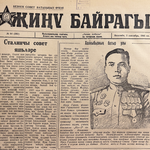 On the Fronts...
On the Fronts...
I.I. Khanipova
Military Feats of the Natives of the Bashkir ASSR during the Great Patriotic War (Based on Materials from Tatar Front-line Newspapers)
The article analyzes the frontline newspapers of World War II, published in the Tatar language, as a historical source about the natives of the Bashkir Autonomous Soviet Socialist Republic. The materials regard both famous war heroes and little-known ones, whose names have been preserved only on the pages of Red Army newspapers. It is shown that the bulk of the articles were aimed at increasing the civic responsibility and patriotism of Soviet soldiers. Involving front-line newspapers in scientific circulation as a source on the history of peoples and regions is a significantly important task.
Publishing: 28/04/2025
How to cite: Khanipova I.I. Military Feats of the Natives of the Bashkir ASSR during the Great Patriotic War (Based on Materials from Tatar Front-line Newspapers) // Historical Courier, 2025, No. 2 (40), pp. 201–211. [Available online: http://istkurier.ru/data/2025/ISTKURIER-2025-2-16.pdf]
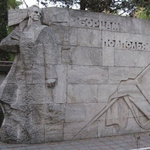 In the Writings of Descendants
In the Writings of Descendants
V.A. Ivanov, V.R. Shcherbakova
Study of Underground Resistance in Crimea 1941−1944 in Regional Studies
The article examines the research of the underground Resistance in occupied Crimea during the Great Patriotic War in historical studies. There were three periods of research into the Resistance movement in Crimea after the end of the Great Patriotic War. Despite a significant amount of research on the history of the Crimean underground during the Great Patriotic War, there are still no generalizing works in the scientific research field. Accordingly, over 80 years, historians have studied in detail only some aspects of this problem.
Publishing: 28/04/2025
How to cite: Ivanov V.A., Shcherbakova V.R. Study of Underground Resistance in Crimea 1941−1944 in Regional Studies // Historical Courier, 2025, No. 2 (40), pp. 212–232. [Available online: http://istkurier.ru/data/2025/ISTKURIER-2025-2-17.pdf]
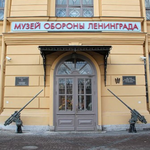 In the Writings of Descendants
In the Writings of Descendants
S.V. Kulik, A.G. Lagoyko, A.S. Prischepa
Study of the Siege of Leningrad in the Writings of Employees of the “State Memorial Museum of the Defense and Blockade of Leningrad”
This article presents a scholarly analysis of the contemporary historiography of the Siege of Leningrad, with a specific focus on the research conducted by scholars affiliated with the Institute for the History of the Defense and Siege of Leningrad at the State Memorial Museum of the Defense and Siege of Leningrad. The study offers a systematic perspective on the formation of a local historiographical school, highlighting its principal thematic areas: the occupation regime and the resistance movement in the Leningrad region, the wartime functioning of the city’s defense industry, everyday life under siege, and information and propaganda strategies.
Publishing: 28/04/2025
How to cite: Kulik S.V., Lagoyko A.G., Prischepa A.S. Study of the Siege of Leningrad in the Writings of Employees of the “State Memorial Museum of the Defense and Blockade of Leningrad” // Historical Courier, 2025, No. 2 (40), pp. 233–244. [Available online: http://istkurier.ru/data/2025/ISTKURIER-2025-2-18.pdf]
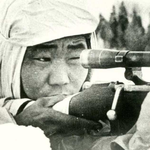 In the Writings of Descendants
In the Writings of Descendants
S.I Sivtseva
The Great Patriotic War in Historiography of Yakutia
The article gives a brief historiographical review of historical research on the Great Patriotic War conducted in Yakutia, with a particular focus on publications of recent years. Newer research from the second half of the 1980s has resulted in the objective presentation of the mainly tragic pages of history. Today, the preservation of historical memory is becoming a topical issue. An attempt is made to outline new tasks and areas for future research on the history of Yakutia during the Great Patriotic War, including the historical demography.
Publishing: 28/04/2025
How to cite: Sivtseva S.I. The Great Patriotic War in Historiography of Yakutia // Historical Courier, 2025, No. 2 (40), pp. 245–257. [Available online: http://istkurier.ru/data/2025/ISTKURIER-2025-2-19.pdf]
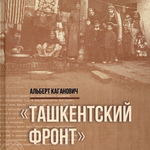 The World of Books
The World of Books
M.N. Potemkina
Review of the Book: Kaganovich A. “Tashkent Front”: Jewish Refugees in the Soviet Rear. Moscow: M. Grinberg Library; Knizhniki, 2023. 448 p.
The article presents a review of the book by A. Kaganovich, dedicated to the migration of Jews from the frontline zone and their stay in the rear regions of the USSR in 1941–1945. The “Jewish refugees” experienced a difficult situation due to almost complete absence of assistance from both central and regional authorities. There is a need to continue the scientific discussion on the problems of migration flows of 1941−1942 and the conditions of stay of migrants in the rear regions of the USSR.
Publishing: 28/04/2025
How to cite: Potemkina M.N. Review of the Book: Kaganovich A. “Tashkent Front”: Jewish Refugees in the Soviet Rear. Moscow: M. Grinberg Library; Knizhniki, 2023. 448 p. // Historical Courier, 2025, No. 2 (40), pp. 28−265. [Available online: http://istkurier.ru/data/2025/ISTKURIER-2025-2-20.pdf]
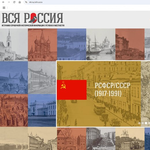 The World of Books
The World of Books
A.V. Kulikova, N.G. Pushkareva, S.I. Trusova
Regional Encyclopedic and Reference Publications Devoted to the Great Patriotic War (1993−2024)
A previously unpublished bibliographic list of regional encyclopedic and reference publications on the Great Patriotic War of 1941−1945, published in the Russian Federation from 1993 to 2024, is presented. The preface to the list provides general information about the typology of the listed publications, as well as a brief statistical description of this array of regional reference literature. The list has been prepared on the basis of information contained in the electronic reference and bibliographic resource “All Russia. Sources of reference and historical information about regions and localities”, posted on the website of the National Library of Russia.
Publishing: 28/04/2025
How to cite: Kulikova A.V., Pushkareva N.G., Trusova S.I. Regional Encyclopedic and Reference Publications Devoted to the Great Patriotic War (1993−2024) // Historical Courier, 2025, No. 2 (40), pp. 266–292. [Available online: http://istkurier.ru/data/2025/ISTKURIER-2025-2-21.pdf]



